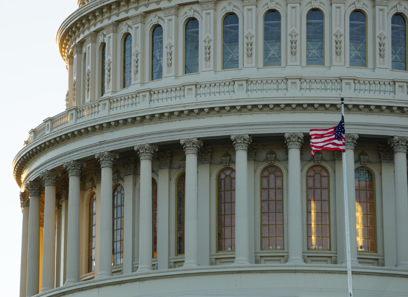How Will Emerging Market Opportunities Shape the M&A Outlook in the Coming Years?
How Will Emerging Market Opportunities Shape the M&A Outlook in the Coming Years?
Blog Article
The Influence of Mergers and Acquisitions on Market Characteristics and Competitors
The landscape of mergings and purchases provides a complex interplay in between fostering development and possibly threatening affordable integrity within markets. As companies pursue critical positionings to boost performance and innovation, the ramifications on customer selection and market pricing warrant cautious scrutiny. While the advantages of such loan consolidations can be obvious, the darker implications usually emerge, raising essential questions concerning market power and the governing structures designed to preserve equilibrium. This discussion invites an expedition of the subtleties entailed, exposing how these company maneuvers improve the really structures of competitors.
Review of Mergers and Acquisitions
Mergers and procurements (M&A) play a crucial duty in forming the landscape of contemporary company, as companies seek to boost their affordable side and accomplish tactical objectives. M&A transactions entail the consolidation of companies or properties with different financial purchases, consisting of mergers, where two companies integrate to form a brand-new entity, and purchases, where one business purchases an additional outright. These activities are driven by a myriad of factors, such as the search of synergies, diversification of item offerings, and the wish to enter brand-new markets.
The M&A process generally involves numerous stages, consisting of calculated planning, due persistance, negotiation, and assimilation (Emerging Market Opportunities). Business conduct detailed evaluations to identify possible targets that line up with their development techniques and assess the monetary and operational implications of a purchase. Regulatory factors to consider also play a critical function, as antitrust regulations are developed to avoid monopolistic methods that can harm competitors
As organizations navigate the intricacies of M&A, the outcomes can dramatically impact stakeholders, including staff members, shareholders, and clients. For that reason, comprehending the characteristics of M&A is important for reviewing their ramifications within the broader context of market behavior and affordable positioning.
Positive Impacts on Market Dynamics
The consolidation of companies through purchases and mergers can cause considerable favorable results on market characteristics. Among the main advantages is the improvement of functional performances. By integrating resources, firms can enhance processes, decrease redundancies, and accomplish economic climates of scale, eventually improving and lowering costs profitability. This performance can convert right into reduced costs for consumers, fostering an extra affordable market atmosphere.

Furthermore, increased market share resulting from mergers can provide companies with better negotiating power with representatives and vendors, assisting in enhanced terms and problems that can benefit the overall supply chain.
Negative Effects for Competitors

Additionally, the elimination of competitors through acquisitions can suppress innovation. When principals merge, smaller companies might battle to complete, bring about a homogenization of services and products. The resultant absence of competitors can develop a setting where continuing to be firms have much less motivation to spend in r & d.
Additionally, mergers can create obstacles to access for brand-new firms, as the merged entity might utilize its improved resources to dominate the marketplace. This can hinder possible entrants, thus restricting competitors and advancement in the long term.
Ultimately, while purchases and mergers can use critical benefits, their prospective to undermine competitors requires careful factor to consider of their wider implications on the marketplace dynamics. The equilibrium between growth and affordable integrity continues to be an essential worry in assessing such company methods.
Regulatory Factors To Consider and Oversight
Regulatory structures play an important role in forming the landscape of acquisitions and mergings, guaranteeing that market characteristics remain reasonable and competitive. These frameworks are made to stop anti-competitive actions and to secure customer rate of interests. Governing bodies, such as the Federal best site Trade Compensation (FTC) in the USA and the European Compensation in the EU, review proposed acquisitions and mergers based upon their possible influence on competitors within the marketplace.
The assessment procedure entails an extensive examination of the marketplace share, potential for monopolistic methods, and the total financial implications of the deal. Regulatory authorities frequently impose problems or call for divestitures to mitigate issues over minimized competitors, ensuring that the merged entity does not dominate the market unfairly.
Additionally, openness is a key component of regulatory oversight. Stakeholder interaction, consisting of public examinations, permits for varied viewpoints to be considered in the decision-making process. This collaborative method assists to promote a balanced regulatory environment that promotes development while protecting competitive practices. Ultimately, effective regulatory considerations are important in maintaining market integrity and encouraging healthy and balanced competitors despite advancing organization landscapes.
Study and Real-World Instances
Often, case researches of significant mergers and acquisitions highlight the profound results these deals can have on market characteristics. The 2000 merger in between AOL and Time Warner works as an archetype, where the expected harmonies dropped short, resulting in a radical decline in investor worth. This case underscores exactly how cultural misalignments and overestimation of market potential can interfere with competition.
On the other hand, the procurement of WhatsApp by Facebook in 2014 exhibits a successful integration that improved the communication landscape. Emerging Market Opportunities. Facebook leveraged WhatsApp's customer base to enhance its solution offerings, efficiently enhancing its market prominence while maintaining competitors in the messaging sector
An additional significant situation is the merging of Exxon and Mobil in 1999, which created among the globe's largest oil business. This debt consolidation led to higher performances but increased problems about minimized competitors in the power market, motivating regulatory examination.
These instances highlight the intricate interaction in between mergers and acquisitions and market dynamics, showcasing both the prospective benefits and mistakes that can develop, inevitably forming affordable landscapes throughout markets.
Verdict
Mergers and purchases play a critical duty in forming market dynamics and competitors. Efficient regulatory oversight is essential to make certain that the advantages of M&An activities are made best use of while alleviating unfavorable influences on market competitors.
One major worry is the capacity for lowered market competitors, as mergers commonly lead to the combination of market power amongst fewer gamers. Regulative bodies, such as the Federal Profession Compensation (FTC) in the United States and the European Commission in the EU, examine proposed purchases and mergers based on their prospective impact on competition within the market.

Mergers and acquisitions play a pivotal duty in forming market dynamics and competitors. Reliable regulative oversight is important to ensure that the advantages of M&An activities are made the most of while mitigating adverse effects on market competition.
Report this page